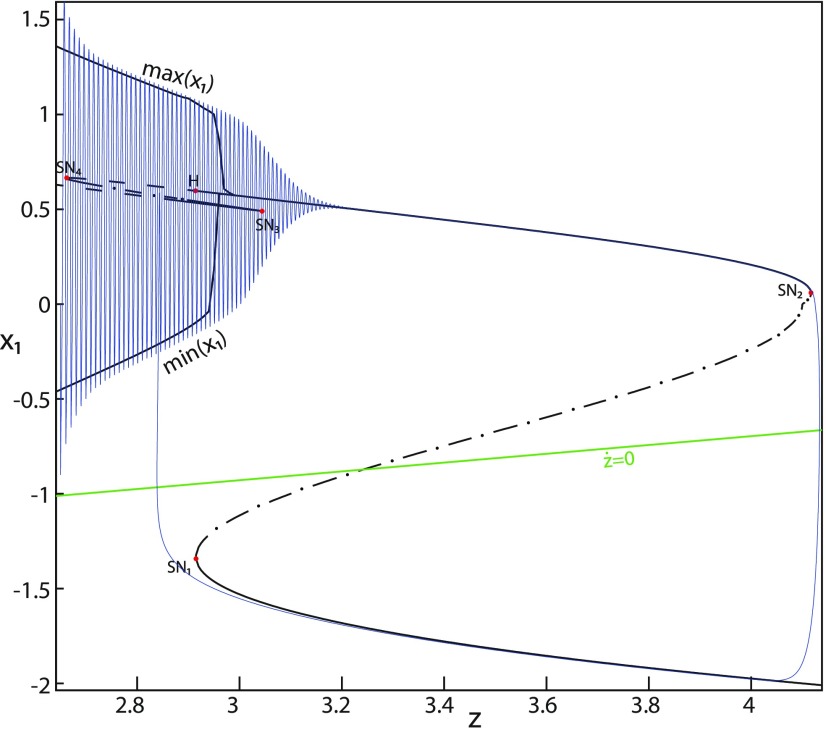Figure 7.
The Epileptor model bifurcation diagram with respect to the slow variable z (m = −0.5, Iext2 = 0). The Z-lower (solid) and Z-middle (dash-dotted) branches consist of stable nodes and saddles respectively. The Z-upper branch is divided into sub-branches separated by a Hopf bifurcation, H: one sub-branch (solid) consists of stable foci and another (dashed) consists of unstable foci. Decreasing z, the Z-lower and Z-middle branches collide in an SN1 bifurcation. Increasing z, the Z-upper (solid) and Z-middle branches collide in an SN2 bifurcation. Below the Z-upper branch, lower (dashed) and upper (dash-dotted) branches corresponding to unstable foci and saddles, respectively, collide in an SN3 bifurcation. The Z-upper (dashed) branch and the upper (dash-dotted) branch below collide as z decreases in an SN4 bifurcation. Let , the z-nullcline () is at the Z-middle branch. A SLE occurs with a fold/Hopf bifurcation. For the (deterministic) trajectories, r = 0.0007, I.C = [0 −5 2.65 0 0 0.01] and Ts = [0:0.001: 1028].

